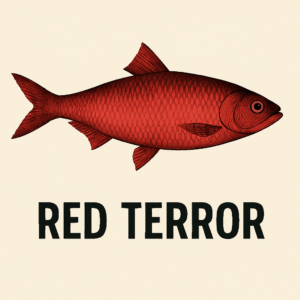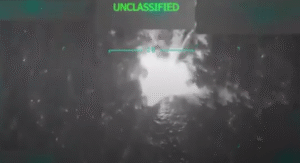It begins, as so often in the Daily Mail, with a headline that is not simply a summary of events but a carefully structured narrative frame:
Daughter ‘tried to storm migrant hotel with a meat cleaver’ after she found asylum seeker from there in her blind mother’s flat ‘moving his hand over his groin’, court hears
This is not a neutral sentence. It combines two separate legal matters (one against the daughter, one against the asylum seeker) into a single continuous statement. The woman is in court facing charges of possession of an offensive weapon, affray, assault on an emergency worker, common assault, and possession of cannabis. The man has been arrested on suspicion of common assault but has not been charged. Presenting these allegations together creates the impression of a single chain of events, with the man’s alleged behaviour positioned as the cause of the woman’s alleged actions.
1. Foregrounding migrant status
The man’s identity is defined first and foremost by his status as an asylum seeker. This is not incidental to the headline. It is the organising principle. In this construction, migrant status operates as an explanatory category in itself, rather than as a relevant but limited detail. Responsible reporting would place it only where it materially affects the facts of the case. Here, it appears in the headline and is repeated in the first paragraphs.
2. The emotive frame
The “blind mother” reference is not legally significant to the charges faced by either individual. It functions as an emotive detail, shaping the reader’s response to the story. It situates the alleged events in a context of vulnerability and defence, lending moral weight to the daughter’s alleged actions before the charges have been considered in court.
3. Selection of lurid detail
The description “moving his hand over his groin” is repeated in the headline and early in the article. This is not standard practice for unproven allegations of sexual misconduct, where care is often taken to avoid unnecessary or prejudicial detail. Its inclusion here contributes to a framing in which the alleged threat is sexualised, a recurring motif in anti-migrant narratives.
4. Importing unrelated protest imagery
The article contains photographs from previous demonstrations at the Britannia Hotel, including police lines and counter-protesters. These images are not directly connected to the incident before the court but provide a broader political backdrop. Their effect is to locate the case within an ongoing political dispute about migrant accommodation, rather than treating it as a discrete legal matter.
5. The role of attribution devices
Phrases such as “court hears” and the use of quotation marks around contentious claims allow the repetition of inflammatory material while maintaining a formal distance from its truth. This is a common legal precaution in court reporting, but here it also enables the paper to give prominence to allegations that have not been proven.
6. The cumulative pattern
Any single article of this type can be defended on the grounds that it reports what was said in court. The pattern emerges in repetition. Across multiple stories, migrant status is foregrounded, vulnerability is emphasised, sexual threat is highlighted, and unrelated political imagery is used to situate individual cases in a larger conflict. The result is a consistent narrative in which migration is associated with disorder and danger, regardless of the outcome of any specific case.
Why this matters
The factual elements of the case are straightforward: two individuals are the subject of separate legal proceedings. The Mail’s presentation merges them into a single moral and political narrative. This approach does not simply inform the public; it shapes the context in which migration is discussed and understood.
A critical reading makes it clear that the headline is not a transparent window onto events. It is a constructed frame, shaped by editorial decisions about which facts to emphasise, which details to select, and which images to associate. Understanding this construction is essential if we are to see beyond the narrative the paper has chosen to build.





